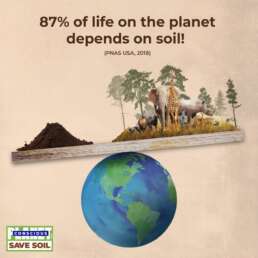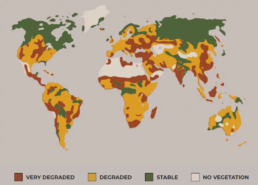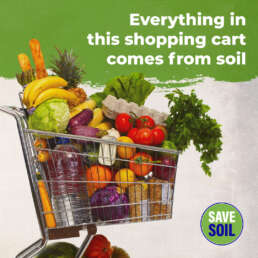Save Soil is a global movement launched by Sadhguru, a world-renowned spiritual leader and environmentalist. The main idea behind the movement is to bring together the global leaders and implement policies for revitalizing the soil and ecological biodiversity.
The Journey
To achieve the target, Sadhguru started his journey of 30,000 km as a lone motorcyclist on 21st March 2022. The journey started from London and covered several European nations including the Netherlands, Germany, Belgium, France, Romania, Austria, etc. It involved meeting the national leaders of 24 countries and advocating for the need to amend the existing policies for better ecological well-being.
The role of soil in mitigating climate change
Soil is the thin layer of organic and inorganic materials that covers the Earth’s surface. The soil supports the growth of plants, which provide food, fuel, and other products that sustain life on Earth.
The health of the soil is essential to the health of the planet. A well-nurtured soil helps to regulate the temperature and climate in many ways. Firstly, it regulates the amount of heat that gets absorbed from the sun into the earth’s surface. Secondly, it maintains a balanced evaporation rate, thus ensuring appropriate humidity and temperature levels. Furthermore, well-maintained soil with rich organic content can retain more water and reduce the irrigation requirements in agriculture.
Soil plays an important role in climate change mitigation because it can store carbon. When plants grow, they take in carbon dioxide from the atmosphere and store it in their leaves, stems, and roots. Some of this carbon is then transferred to the soil, where it can be stored for thousands of years.
Healthy soils can store more carbon than degraded soils. Therefore, improving soil health is one way to help mitigate climate change. There are a number of ways to improve soil health, including:
- Reducing tillage
- Improving crop rotations
- Adding organic matter to the soil
- Improving drainage
- Using cover crops
Each of these practices can help improve soil health and increase its ability to store carbon. In addition, these can also help improve soil fertility, reduce erosion, and improve water infiltration and retention. All of these benefits can help mitigate the effects of climate change.

The current status of the soil
Soil organic matter is essential for maintaining soil fertility, as it helps the soil retain water and nutrients and prevents erosion. In addition, organic matter is a key food source for soil microbes, which are essential for plant growth. Without adequate organic matter, soils become less productive and more susceptible to degradation.
Organic content in soil has decreased significantly over the past few decades. This is due to various factors, including intensive farming practices, the use of synthetic fertilizers, and increased urbanization. This decline in the organic matter has serious implications for soil health. It reduces the soil’s ability to retain water and nutrients, increases its vulnerability to erosion, and makes it more difficult for plants to establish themselves.
In order to reverse this trend, farmers must adopt more sustainable practices, such as using cover crops and organic fertilizers, and municipalities must create policies that encourage the preservation of green space.

The strategies adopted in the Save Soil movement
The Save Soil campaign uses various strategies to achieve its objectives. These include raising awareness through public events and workshops, producing educational materials, and working with partner organizations.
Save Soil movement has successfully received support from renowned global leaders and researchers including but not limited to Dr. Rattan Lal (World Food Prize Awardee 2020), Dr. Jo Handelsman (Former, Science Advisor to President Barack Obama), Erik Solheim (Former UN Environment Executive Director), Stewart Maginnis (Deputy Director General, IUCN), Dr. Naoko Yamamoto (Assistant Director-General, WHO), Manoj Juneja (Assistant Executive Director, World Food Programme), Shamila Nair-Bedouelle (Assistant Director-General for Natural Sciences, UNESCO), and Tim Christopherson (Head, Nature for Climate Branch, UN Environment Programme).
How to Participate in the Save Soil Campaign?
If you’d like to participate in the Save Soil campaign, there are a few things you can do:
- Educate yourself and others about the importance of healthy soils.
- Advocate for policies and practices that protect and restore soils.
- Support farmers and other land managers who are using practices that improve soil health.
- Reduce your own impact on soils by choosing products that are produced in ways that don’t degrade soils, and by composting or otherwise recycling organic waste.
- Help raise awareness of the campaign by sharing information about it with your friends and family.
Save Soil campaign is not just about food security and environmental sustainability. The soil also holds our cultural heritage and civilization’s history.



Can I just say what a comfort to find somebody who truly understands what theyre talking about on the net. You certainly understand how to bring a problem to light and make it important. A lot more people really need to look at this and understand this side of the story. I cant believe youre not more popular because you definitely possess the gift.
I really liked your article.Really looking deliver to contact more. save writing.